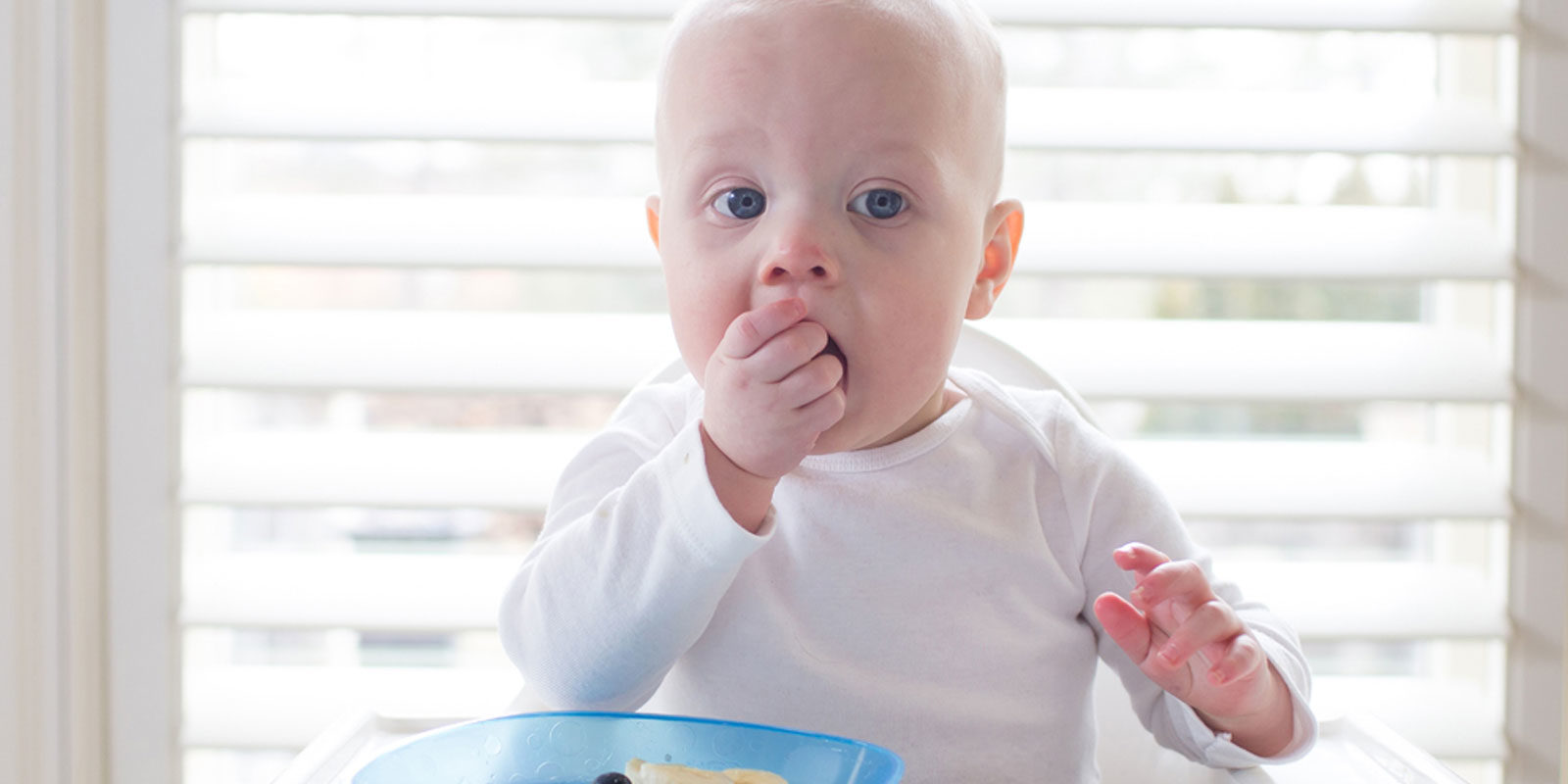by Katie Heaney, RDN, LD
Introducing your baby to solid foods is an exciting milestone. When my son was about four months old, I joined the conversation with other moms and dads about the next step in feeding our babies, particularly solid food introduction. My training as a clinical pediatric dietitian led me to teach new parents to spoon-feed pureed foods between four and six months of age, starting with iron-fortified cereals, followed by fruits, vegetables, dairy, and finally meat. It was very specific and led by the caregiver. When I heard about the book Baby-led Weaning by Dr. Gill Rapley, I read it and knew the approach was a great alternative to spoon-feeding, one reason being the child leads the process. So, what exactly is baby led weaning?
Defining Baby-Led Weaning (BLW)
Baby-led weaning (BLW) is a practical, safe, hands-on approach to starting solid foods and is an alternative to spoon-feeding pureed foods. Some challenges that caregivers report with spoon-feeding include that purees do not resemble real foods and that it removes the baby’s control. BLW is based on the premise that babies who feed themselves healthy foods provided by caregivers will choose a wider variety of foods, be less picky as they get older, reduce risk of overweight and obesity, and have a healthier relationship with food.
Five Steps to Success with Baby-Led Weaning
Ready to start feeding your baby the BLW way? Here are five steps to maximize the fun and success:
1. Start feeding at the right age.
Close to six months is ideal. The American Academy of Pediatrics1 says breastfeeding or bottle feeding should be the sole nutrition source for first six months, and the World Health Organization (WHO)2 says all infants should start receiving foods in addition to breast milk from six months onward. Introduction of solids prior to four months is associated with increased weight gain and adiposity (severe obesity) in infancy and childhood. Waiting too long can negatively impact food acceptance later in childhood.
The signs that your baby is ready to eat are that he is six months of age or older, he is sitting up on his own relatively unassisted, his extrusion reflex (tongue thrust) has disappeared, and he shows an interest in food and mouths objects.
2. Create a peaceful environment.
Maintain food experience that brings happiness and joy.
- Put baby in a safe chair and get at his/her eye level
- Remove or minimize distractions
- Schedule meals and snacks
- Sit with your baby for meals
3. Stick to a schedule.
WHO suggests offering food two to three times per day between six and eight months and three to four times per day between nine and eleven months.
4. Offer “bang for your bite” foods (foods packed with healthful surprises).
The best “bang for your bite” veggies are sweet potatoes, carrots, bok choy, cauliflower, broccoli, beets, chard, spinach, kale, and Brussels sprouts.
5. Know your feeding role.
Ellyn Satter’s division of feeding responsibilities states that the parents’ job is to determine what, when, and where the baby eats. Babies determine how much and whether to eat. BLW is as much about how you feed as it is what you feed.
Keep introducing new foods. It may take a baby seeing the same food 10-15 + times before she tries it.
Concerns with Baby-Led Weaning
Don’t think BLW is for you? Not everyone does. The number one reason that caregivers choose not to introduce BLW is the fear of choking. Ways to prevent choking are to sit the baby upright, minimize distractions, offer appropriate foods, and know the difference between gagging and choking. Other objections are that BLW is too messy, takes too much time, and that it requires the support of all caregivers.
Literature on BLW is small but growing, so it is not the only approach to consider. There does not need to be one feeding approach. Caregivers can try both spoon-feeding and BLW and choose one or do a combination. A mixed approach could offer the best of both worlds. One of the most important ways to have a positive food experience with your child is to provide a peaceful and happy environment around mealtime and offer healthy foods in the form that is best for your family and household.
